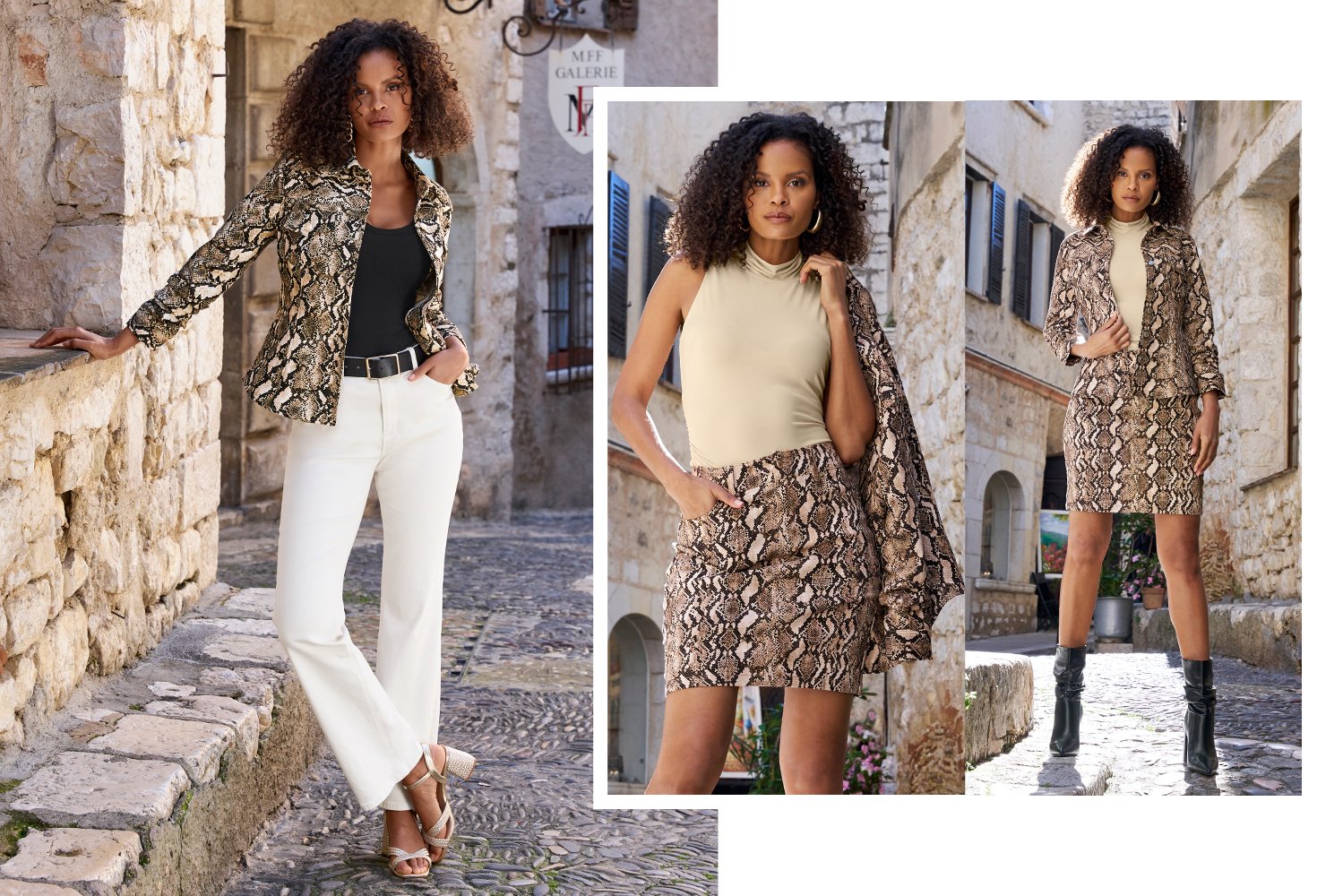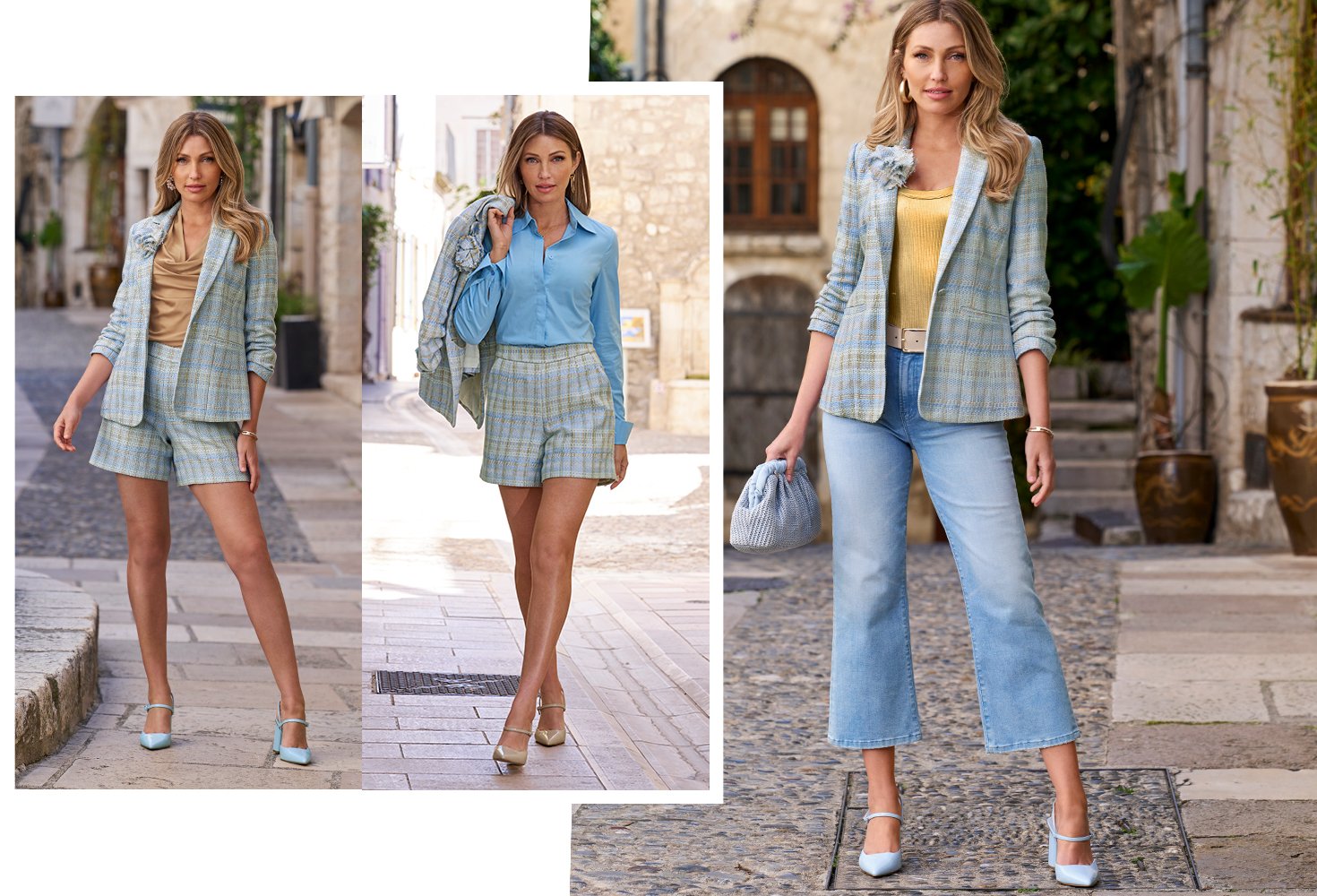Fashion Tips & Tricks
The Ultimate Guide for Transitioning Your Wardrobe
July 10, 2024
In This Article
With seasonal changes, investing in versatile styles is a smart approach to outfitting the in-between time of summer and fall. Our transitional strategy helps you get multiple wears out of these adaptable pieces and saves time and money while looking chic. So, if you’re searching for on-trend outfits or a new statement look for the upcoming shift, consider these insightful trans-seasonal tips to assist in your selections.
1. Identify Transitional Pieces
As previously mentioned, a transitional piece bridges the gap between two seasons and extends the wearability of your existing wardrobe. For instance, when it’s hot in the daytime but chilly at night, you’ll want to be prepared for both by having a sweater or jacket to layer over a warm-weather top.
Versatile items that can be layered or styled differently are excellent transitional choices. Neutrals work well as transitional staples. They pair equally to brighter summer hues and darker fall hues. Even styles that traditionally feel more fall, like a bootie or boot, seamlessly fit into late summer with a lighter colorway.
For your transitional style list: Python print denim jacket and matching skirt keep the palette neutral with street-chic edge.

2. Layering Techniques
Let’s explore the art of layering as a key strategy for transitioning your wardrobe. Different layering combinations, such as pairing lightweight tops with cardigan sweaters or tweed blazers, allow for styling flexibility that will prepare you for unexpected weather or compensating blasts of AC. Alternatively, when the temps drop later in the year, you can wrap a scarf over your cardigan or blazer to wear outdoors.
Style Tip: Experiment with layering textures and lengths to add visual interest and dimension to your outfits. Traditional summer silhouettes in fall textures blur the end of one season and the beginning of another. Case in point: tweed shorts.

3. Accessorize for Versatility
The role of accessories to transform and update your wardrobe for the new season is paramount. Essential accessories like scarves, hats, and statement jewelry add flair to transitional outfits and complete the look.
Scarves of all weights and materials add interest, offer warmth, and can be neutral or colorful with trending prints. Likewise, hats can be extremely chic. Natural materials and tones, such as raffia or a wool blend fedora, add polish and protection from the elements.
Metallic jewelry is also extremely versatile and complements almost every outfit, so consider adding a few modern pieces to your collection. A little glam does wonders for elevating your look!
4. Plan for Practicality
It’s important to have adaptable pieces that can easily transition from day to night or from work to weekend. We recommend investing in quality basics and versatile staples that endure multiple seasons and trends. Identify where the need is within your current wardrobe. This could be solved with an updated blazer or cardigan, a chic jean, a classic white shirt, and statement styles for those unique touches we love.
Now, to recap, the ultimate guidelines for building a successful transitional wardrobe are:
First, identify transitional pieces that will bridge the seasonal gap within your wardrobe. Next, you’ll be experimenting with different layering techniques and textures. Then, you’ll accessorize for versatility with hats, scarves, and jewelry that elevate your looks. Finally, you’ll plan for practicality—or consider your lifestyle and daily activities contributing to the attire you may want to focus on. This way, you can prioritize the best styles that save you the most time and money.
Applying these tips and techniques to refresh for the upcoming season will prepare you to tackle the changeover. Keep in mind the key steps and strategies covered in this ultimate guide when selecting new pieces. Remember that transitioning one’s wardrobe is about updating clothing, embracing change, and expressing your personal style.























